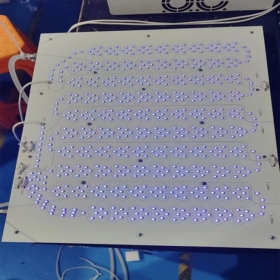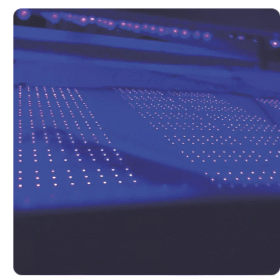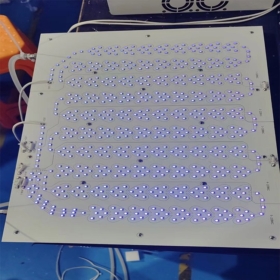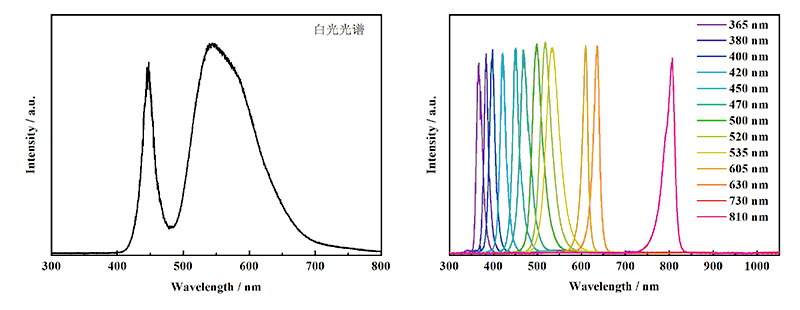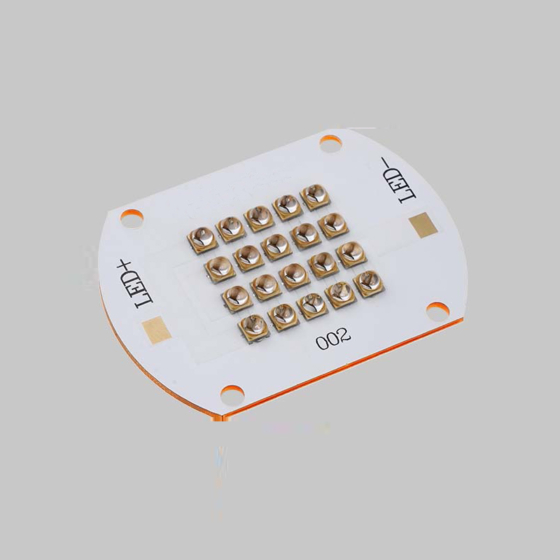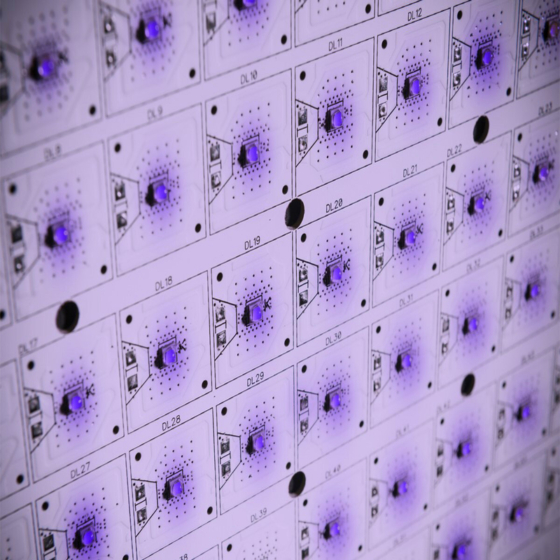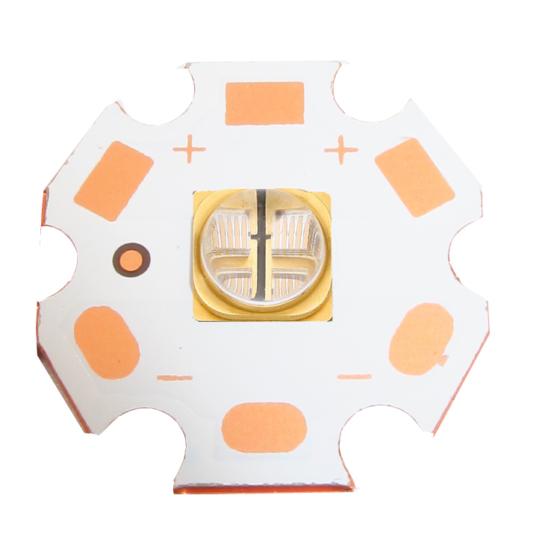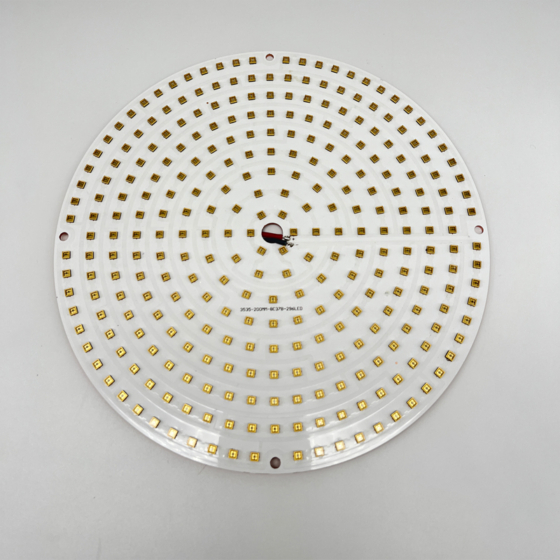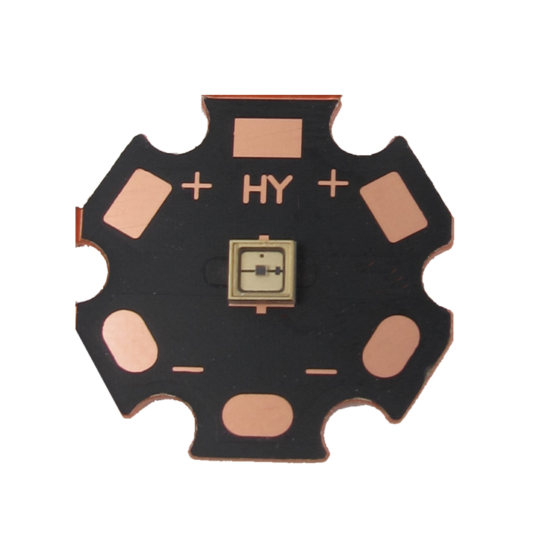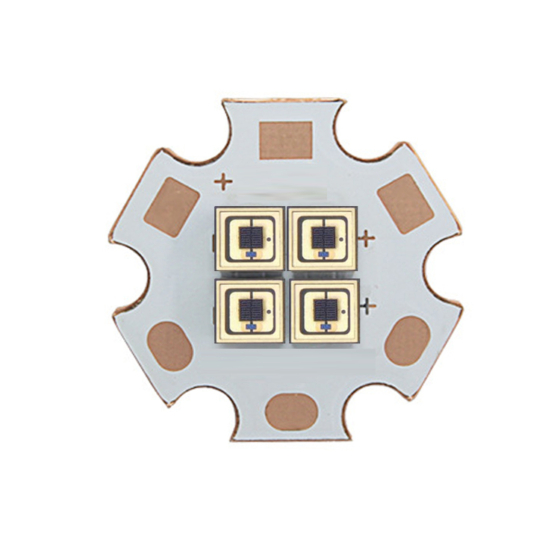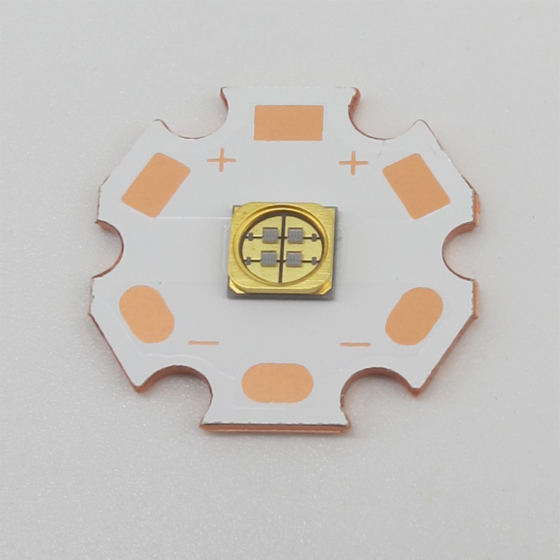UVA LED Light Sources for Photochemical Processes
Specific UV light wavelength-intensity combinations create molecular interactions that result in the synthesis or separation of chemical compounds. From anti-cancer (Hydroxycamptothecin) or anti-malaria (artemisinin) drugs to powerful precursors (carbon tetrachloride), photochemistry has been the ideal mechanism for many chemical compound production systems in pharmaceutical, agricultural, cosmetic, petrochemical, plastics, dyes, and toxic waste disposal applications.
Photochemistry is revolutionizing the industrial chemistry landscape, however, it has long been tied to the limitations of UV mercury lamps. UV LED lamps are the perfect substitute to mercury and solve common shortcomings of the currently used light source.
The Benefits of UV LED Lamps in Photochemistry far Surpass those of Mercury
![]()
Narrow Wavelength Light
With a single (narrow band) wavelength light, UV LED lamps ensure better yields by reducing undesirable products of secondary reactions and reducing raw material production cost.
![]()
Longer Lamp Life & Fewer Replacements
Phoseon’s lamp life tests have surpassed 60,000 hours of LED lamp lifetime, which equates to thirty years of LED on-time for a typical business.
![]()
Saves Power Costs
With optimizations, such as simplicity of the power supplies, Phoseon LED is able to save costs for customers.
![]()
Mercury-free
Mercury-free allows for no secondary containment and eliminates the risk of having to clean tanks and production lines in case of lamp breakage.
![]()
Consistent Performance Over Life
LEDs give the same results on day 1 through day until end of life. Hg lamps degrade through solarization and mercury condensation from day 1 of operation.
![]()
Lower Skin Temperature
Less heat added to reaction, less need for secondary containment.
Heyi’s patented Semiconductor Light Matrix™ (HY)™ technology encompasses LED arrays, optics, thermal and electrical management to ensure optimal performance. Reliability Engineering is at our core. With over 15 patents worldwide, Phoseon has earned the reputation for innovation, quality and reliability.
We are ready to revolutionize the industrial chemistry landscape with the world’s first and best UV LED system. In addition, Phoseon’s customer support with experts in the field have driven our clients yield up 2-3x.
High-power UVA LED Modules
UV-A based LEDs are a relatively new technology. Examples of wavelengths currently commercially available include 365nm, 375nm, 385nm, 395m, 400nm 415nm,420m, 425nm 430nm, and 435nm However, UV-A LED technology is rapidly developing, and over time new wavelengths will be developed, costs will reduce and efficiencies will increase as has already happened within the red, infrared, blue, and UV-A wavelength LED ranges.
UVC LEDs vs. Traditional Technologies
Many applications use Mercury based UV lamps for UVC LIGHTING applications but this technology has a number of disadvantages versus LED technology. There is increased regulation around mercury usage and its environmental impact resulting in increased disposal costs and proposed bans in some countries. These systems also require the use of chlorine to enable disinfection and are typically much larger than LED-based systems.
UVA LED Modules Application:
 Solar simulator LED module 200-1750nm
Solar simulator LED module 200-1750nm


